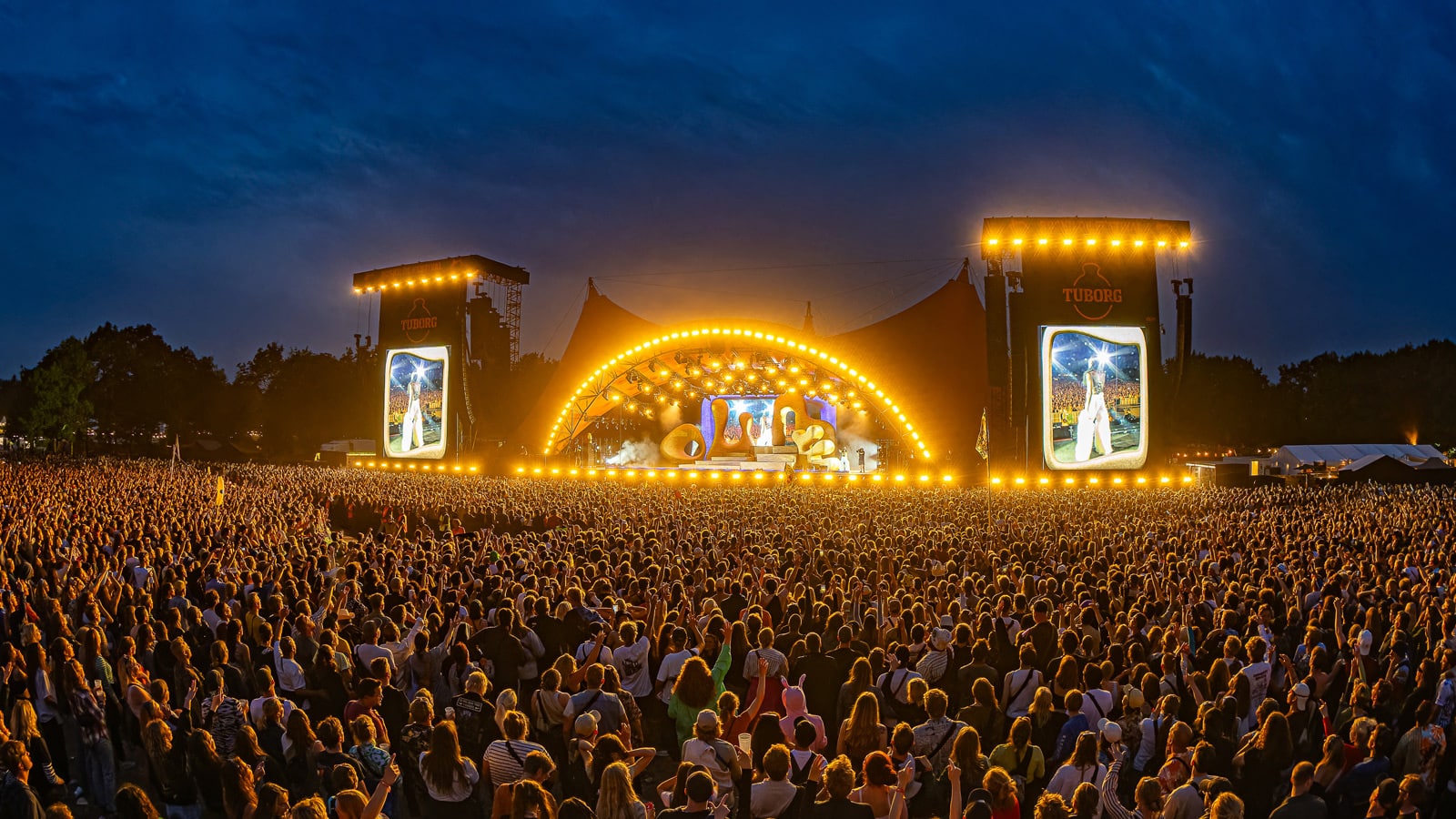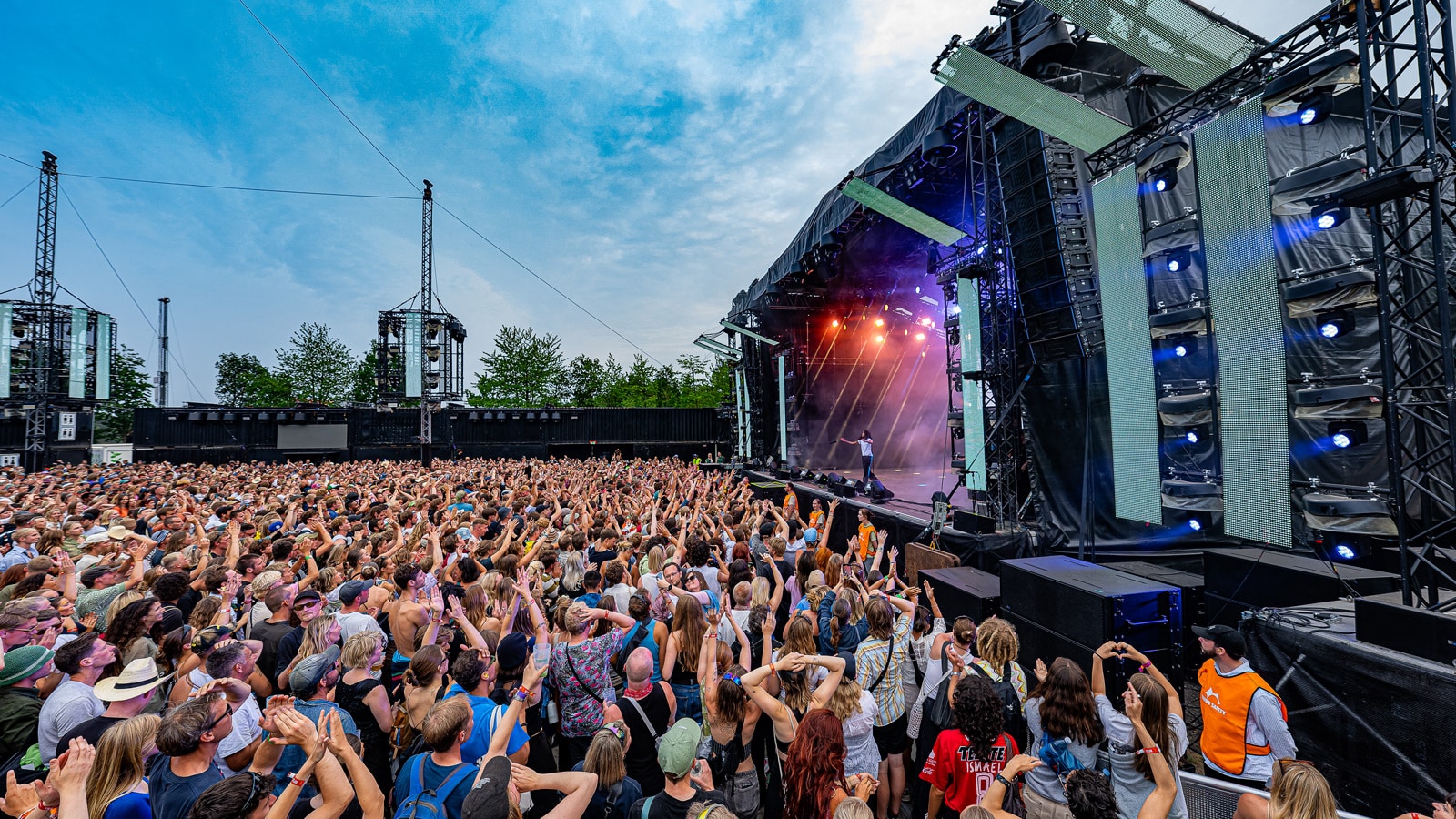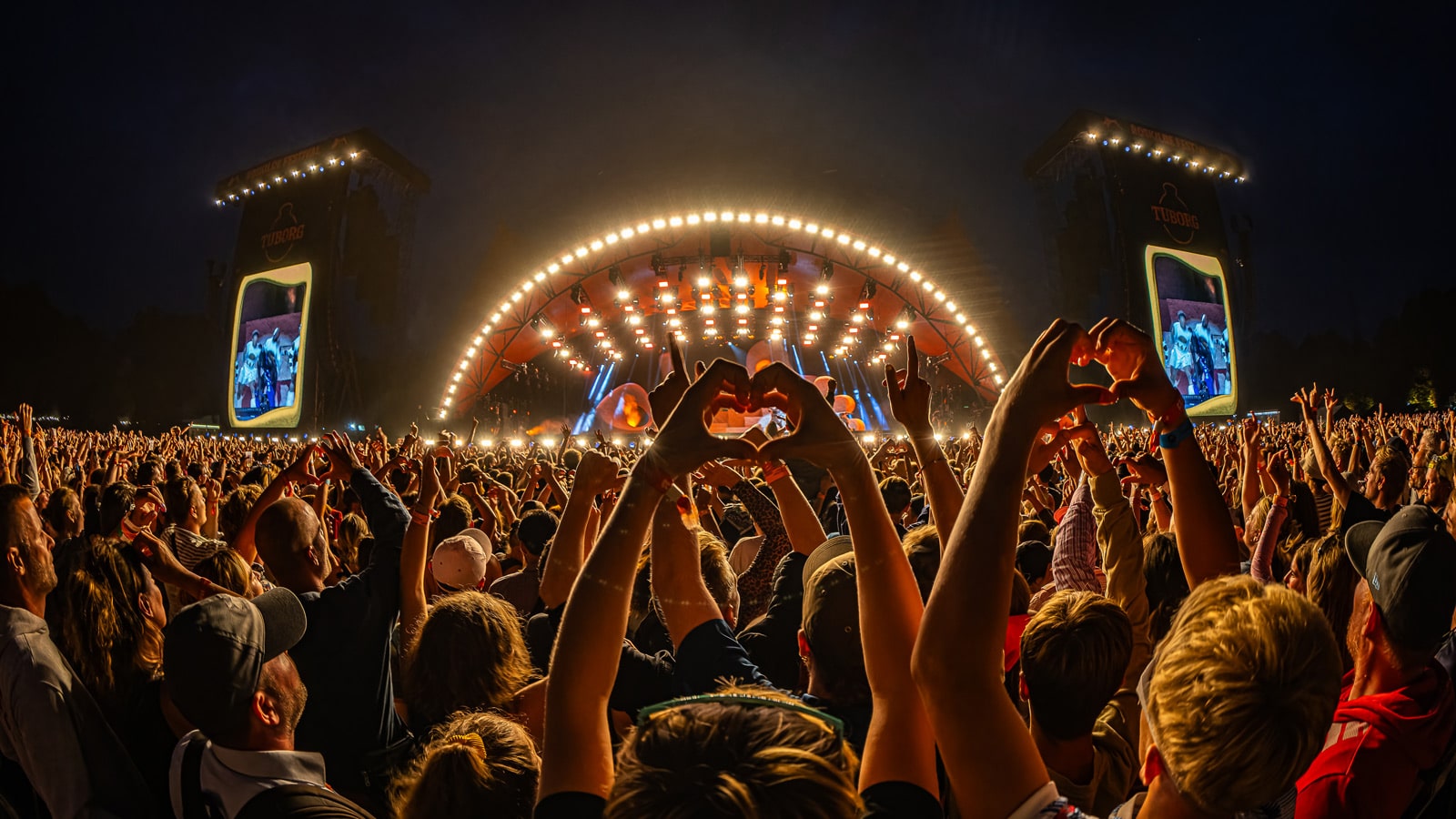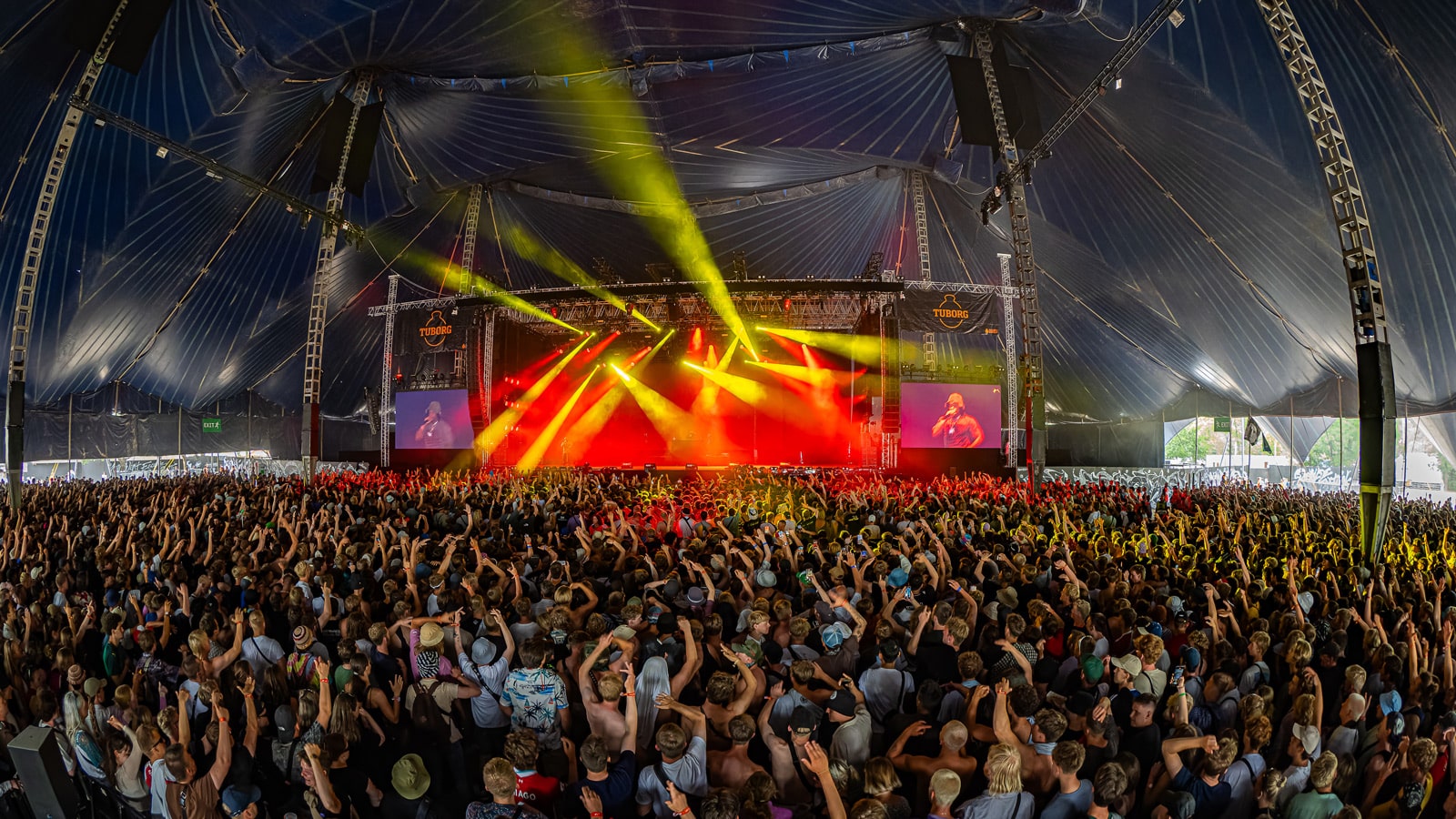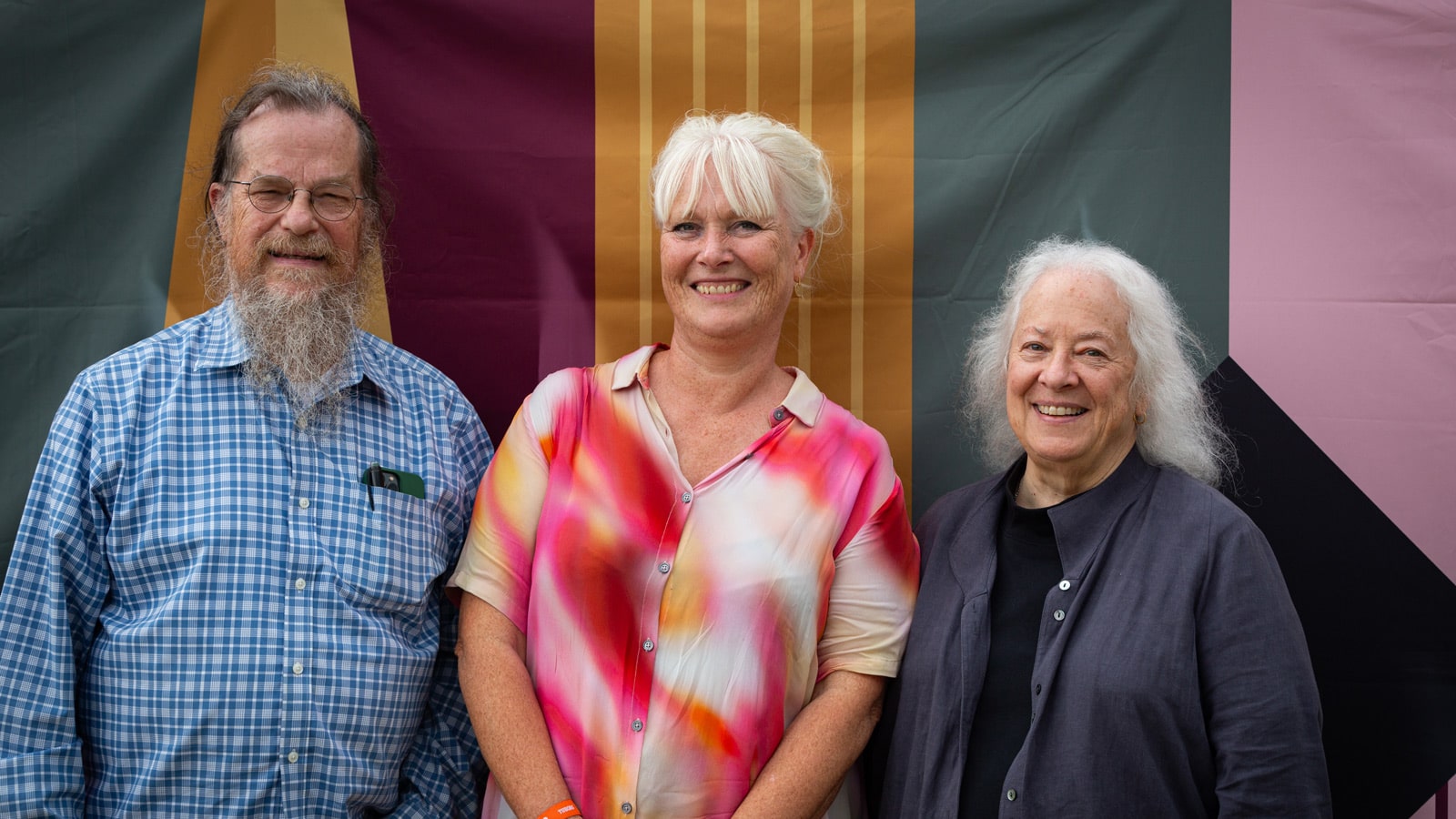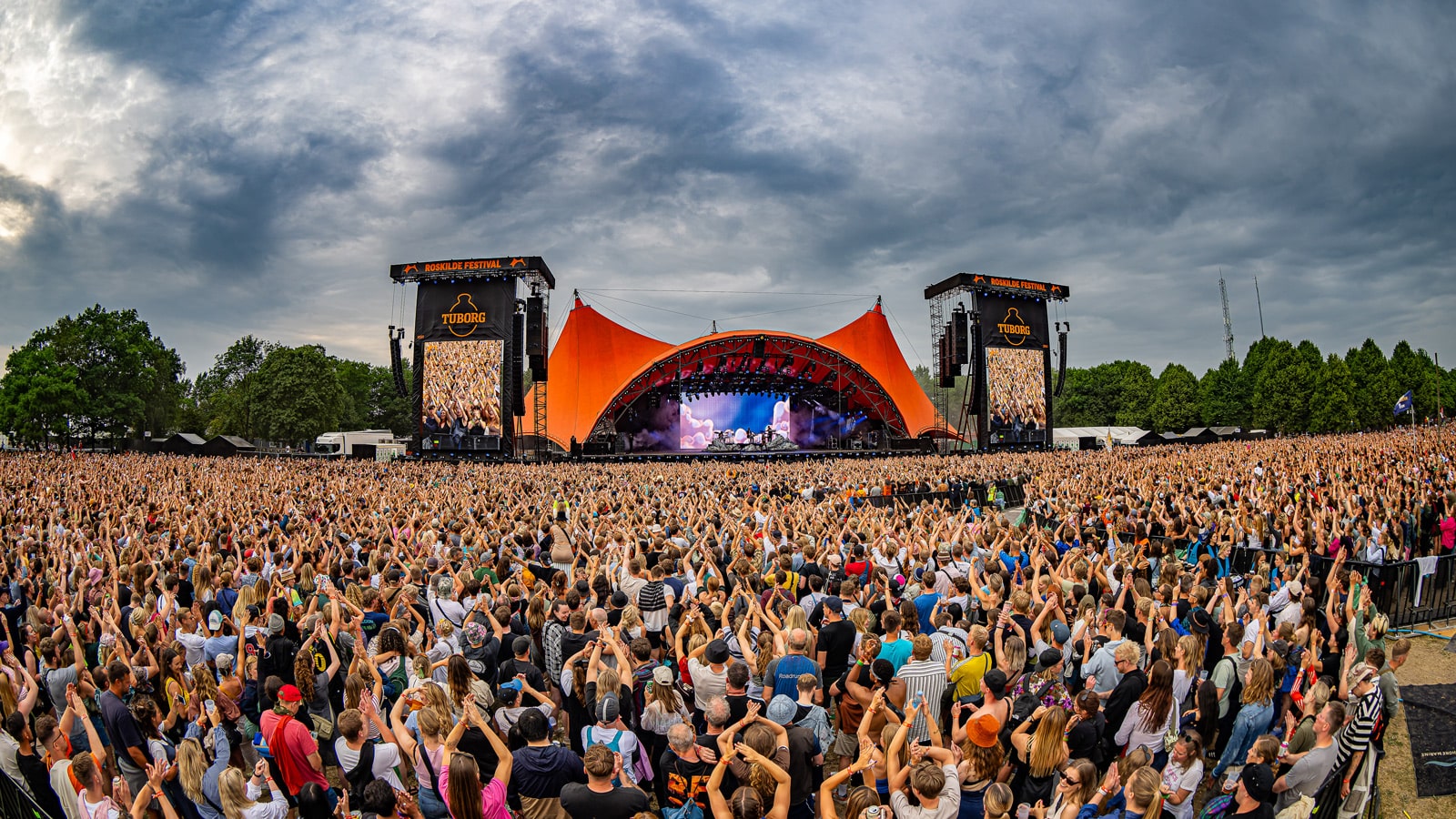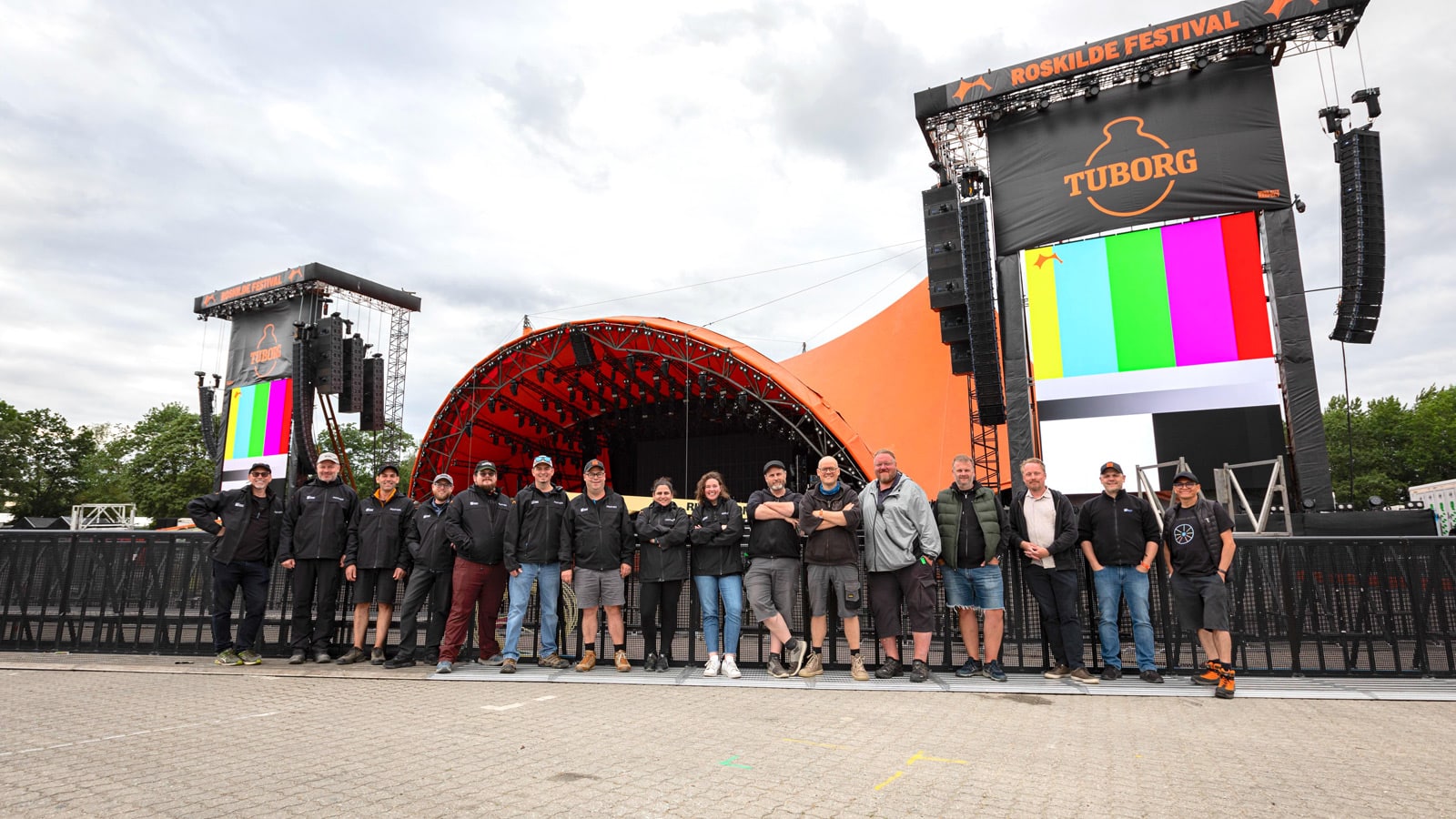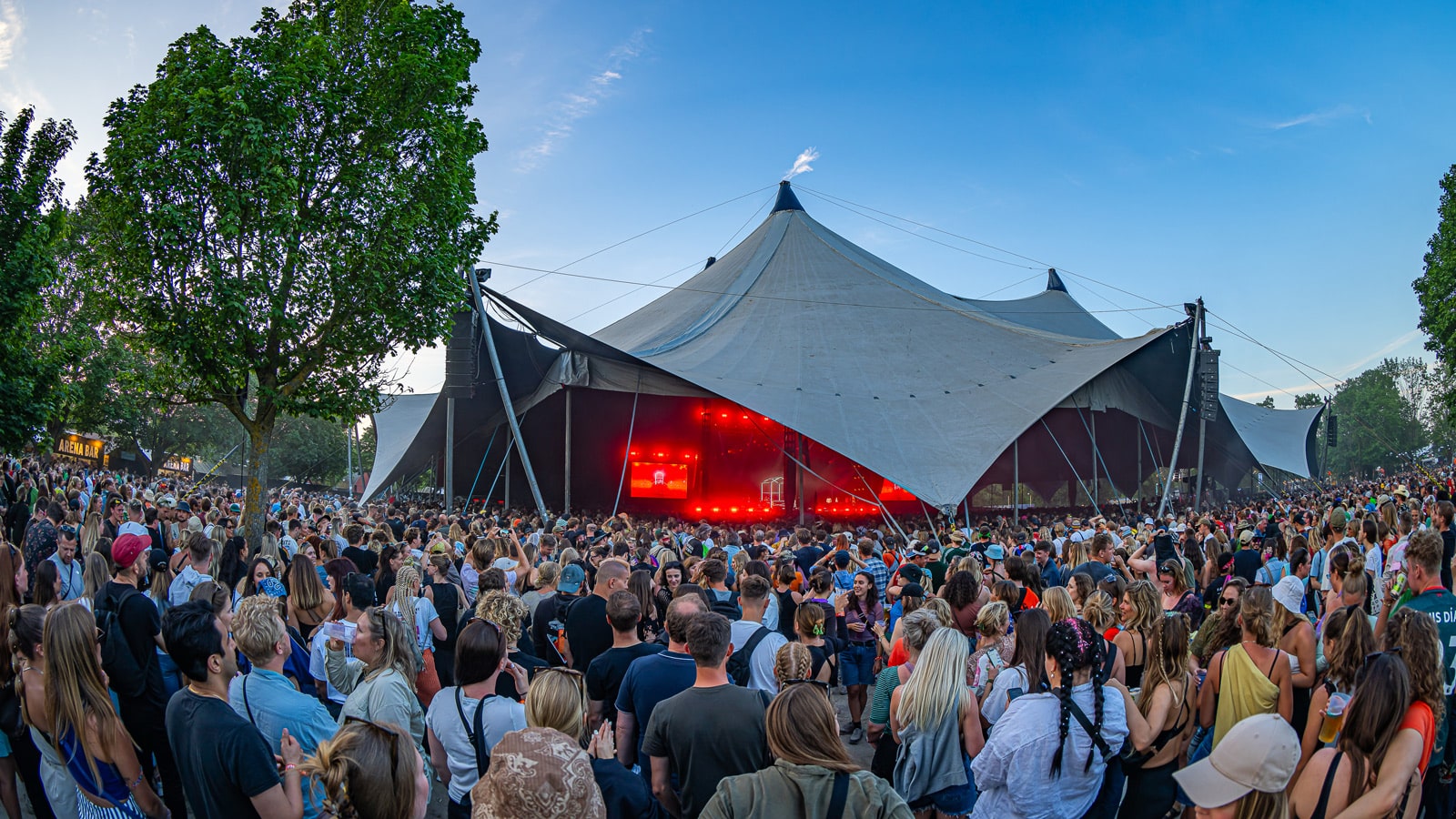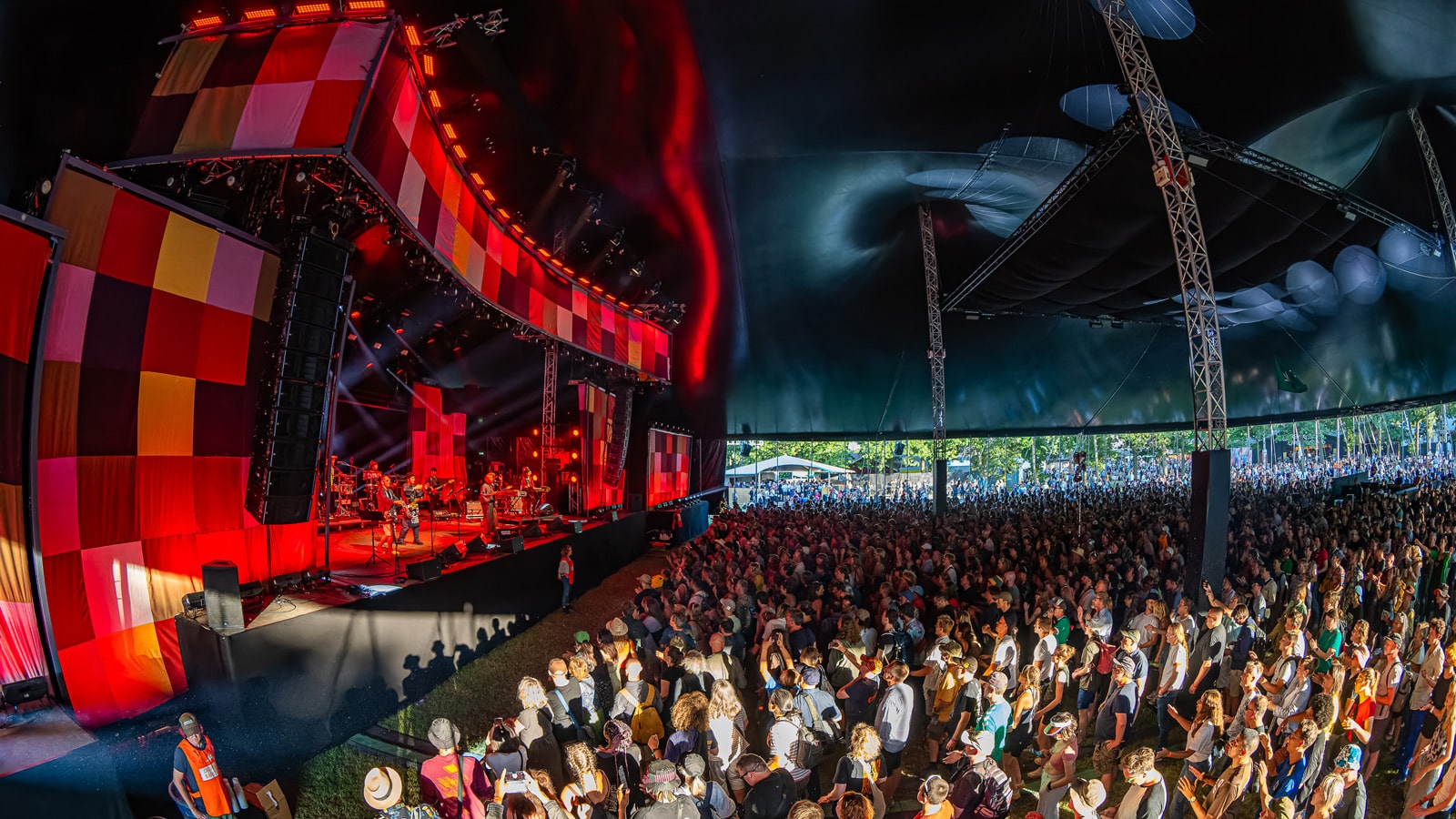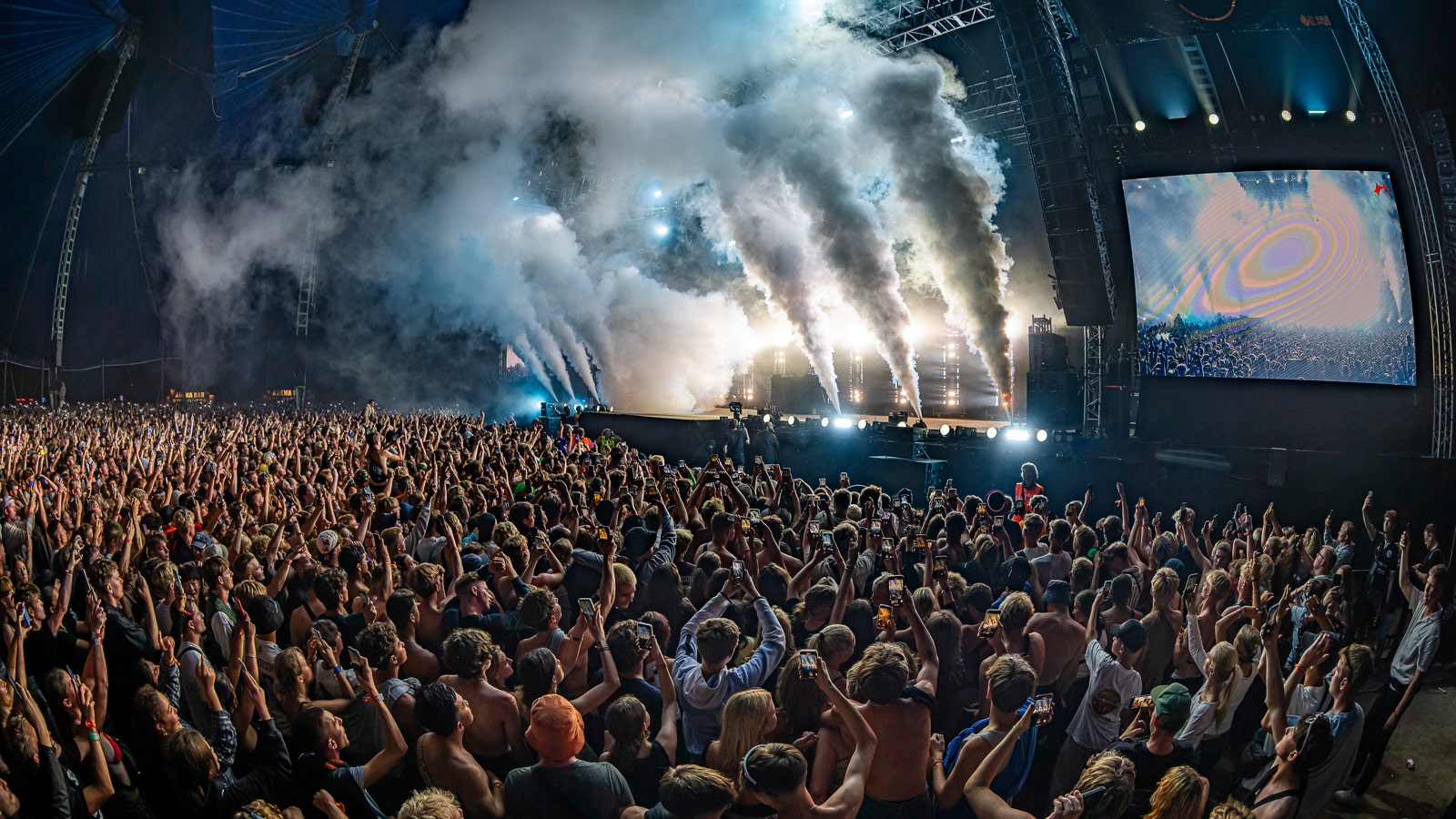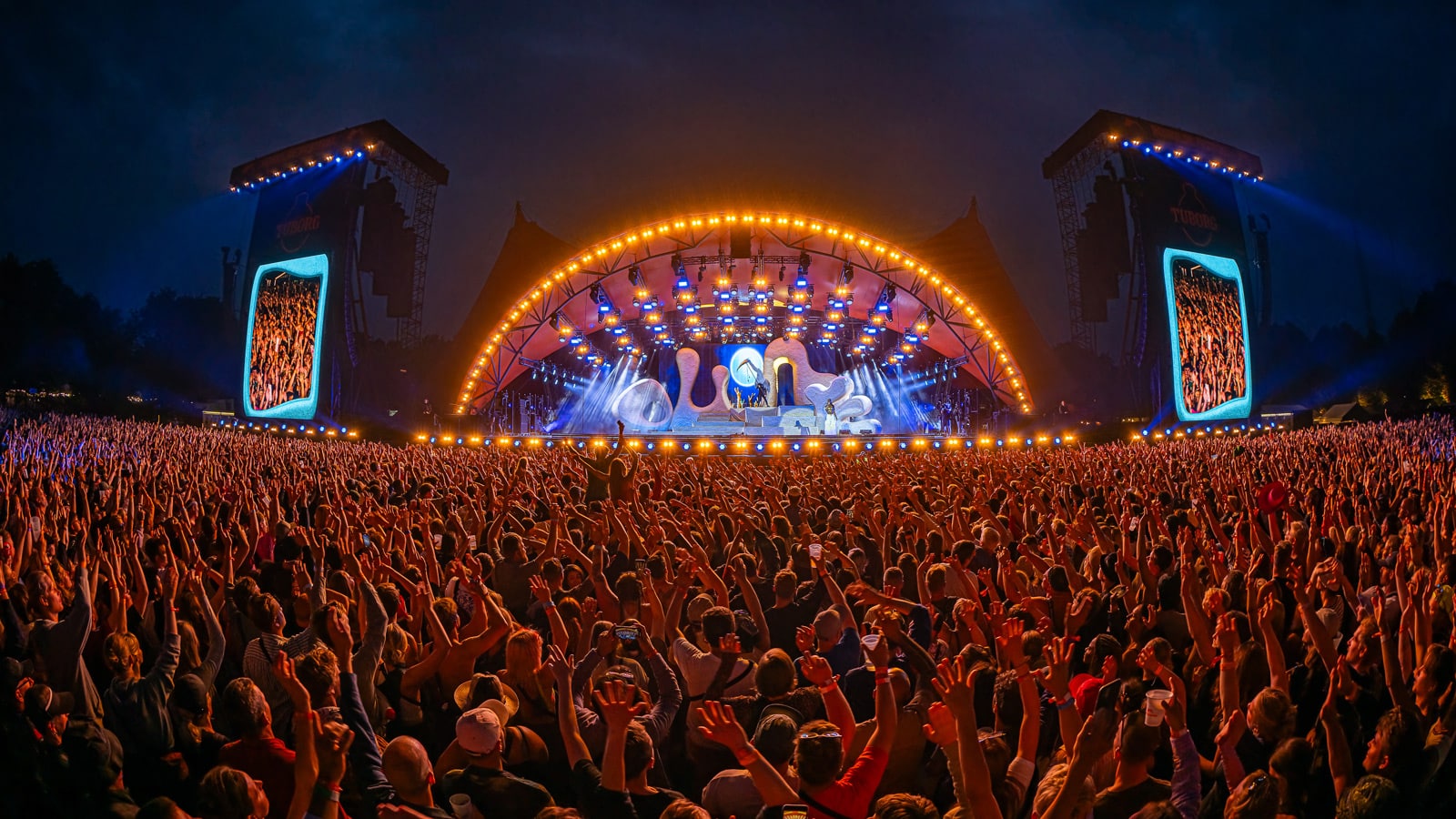Roskilde is always aiming to improve the audience experience. After day one of working with PANTHER, we have realized better coverage of the site, with more clarity, and a system that’s easier to work with.”
Lars LiliengrenHead of Production, Roskilde Festival
The 51st edition of the Roskilde Festival, Northern Europe’s largest and longest-running celebration of music and the arts, wrapped in early July following seven days of the annual event’s distinctive blend of entertainment, artistic expression, and global citizenship. This first year of the festival’s second half-century also marked the sixth year of partnership with Meyer Sound, and in 2023 four of the festival’s stages were powered by systems based around the new PANTHER large-format linear line array loudspeakers.
The first in a new generation of Meyer Sound loudspeakers, PANTHER offers dramatically reduced power consumption along with an unprecedented size and power-to-weight ratio.
“Roskilde is always aiming to improve the audience experience,” says Lars Liliengren, the festival’s head of production. “After day one of working with PANTHER, we have realized better coverage of the site, with more clarity, and a system that’s easier to work with.”
A complement of 141 PANTHER loudspeakers were deployed at the iconic Orange Stage, which hosted headliners including Lizzo, Blur, Lil Nas X, and Kendrick Lamar. PANTHER arrays powered not only the mains but also outfills, center fills, and the five delay towers. The balance of the 227 total PANTHER at the festival was installed in systems at the Arena (46 PANTHER), Avalon (20 PANTHER), and Apollo (20 PANTHER) stages.
The task of designing systems for maximum coverage, minimum inter-stage leakage, and potent, full-bandwidth coverage once again was entrusted to Bob McCarthy, Meyer Sound’s director of system optimization.
“In the three smaller venues it was mainly a one-to-one substitution for LYON loudspeakers, so we immediately benefited from lighter weight and reduced power consumption,” McCarthy observes. “At the Orange stage, we replaced both LYON and the much larger LEO loudspeakers on a near one-one-one ratio with PANTHER, gaining even more benefits.”
The response from the audience and engineers has been rewarding, he says. “The improvements in coverage and clarity are just stunning. It’s been amazing to everybody who has heard it — myself included!”
Tight coverage is helpful with open-air stages such as the Orange, but it is absolutely critical in tent stages like the Arena, which featured international headliners including Rosalía. “Last year, I was feeling we had reached the limit of what we could do in there without serious acoustic treatment,” says McCarthy. “With the control of PANTHER, the sound was noticeably improved. The pattern cuts off sharply, and that had a favorable effect on the amount of energy hitting the sides of the tent.”
The 25% weight reduction on the rigging points — compared to the prior LYON solution —allowed better positioning on the outriggers, which in turn enabled optimum tilt and aiming of the arrays, says Meyer Sound Technical Services Manager, International, Dennis Tholema. “This also helped with unwanted reflections, so the large, tented venue was much better behaved than before.”
The lighter PANTHER arrays also reduced loading on the delay towers, and that combined with beefed-up structures allowed flying rather than ground-stacking delay subwoofers. “This allows us to bring the full impact of the shows all the way up the hill,” says McCarthy. “You cannot underestimate the importance of low-frequency impact with today’s music. Last night, for example, everybody was fully engaged with Kendrick Lamar at 150 meters from the stage.”
Leading the team responsible for creating PANTHER was Katie Murphy Khulusi, engineering director, acoustical and mechanical, who came to Roskilde to evaluate the impact of their work.
“We don’t want our products to add anything, but rather we see our role as reproducing the work of the artists and making sure that the experience is carried to everyone in the audience, not just the people in the front,” she says. “We want every single person, even way in the back, to clearly hear what the artists and their teams are putting out there.”
Meyer Sound President and CEO John Meyer, also on hand, made a similar observation. “You can theorize all you want about how the system will respond, but ultimately you need to get out there and see how the audiences react to it. You want to see that they are happy to be there and that you can hear the music far in the back just as well as right in front of the stage.”
For Roskilde 2023, Meyer Sound systems were installed at three other featured stages. The Gaia stage relied on LEOPARD compact linear line array loudspeakers for mains with LINA very compact linear line array loudspeakers for delays, while the Gloria stage deployed LINA systems for both mains and delays. The system at the Eos stage was anchored by LYON line array loudspeakers. The total complement of 795 loudspeakers also included UPQ‑D1, UPQ‑D2, and ULTRA‑X40 full-range loudspeakers; 1100-LFC, 900‑LFC, and 750‑LFC low-frequency control elements along with 500-HP subwoofers; and MJF-212A, MJF‑210, and MJF‑208 stage monitors. The audio systems supplier for Roskilde 2023 was Victory Event, Stage & Tour ApS of Risskov, Denmark.
As in prior years, audio production for the Roskilde Festival was a monumental team effort involving Meyer Sound technical teams from North America, Europe, and the Middle East, the crew from Victory, and the festival’s own professional audio crew.
With memories of the pandemic finally fading, the 51st edition of the Roskilde Festival was a celebration of renewed hopes. “It’s great that the festival is back full force this year,” remarks Meyer Sound Executive Vice President Helen Meyer, also at the festival. “You can tell that there’s a new spirit here that feels really good. John and I are very proud and happy to again be part of it.”

